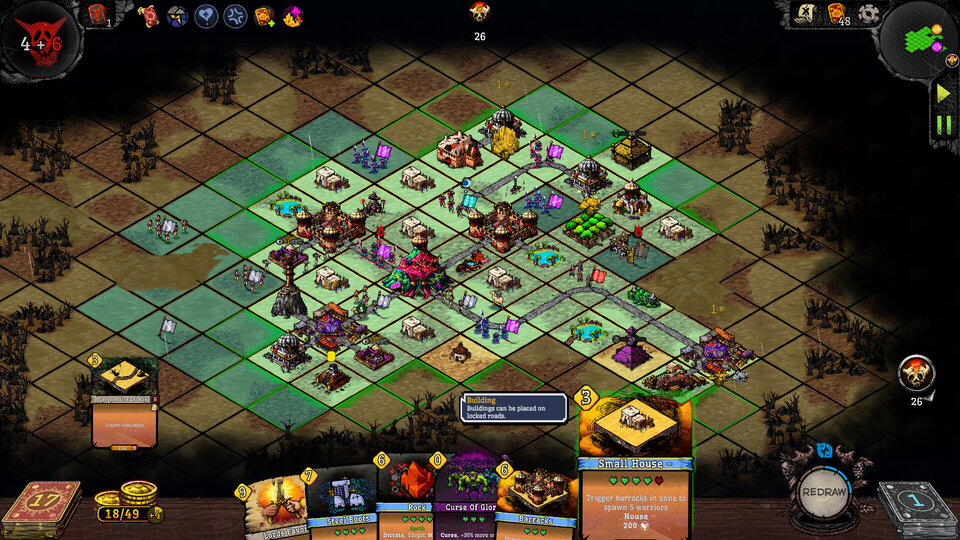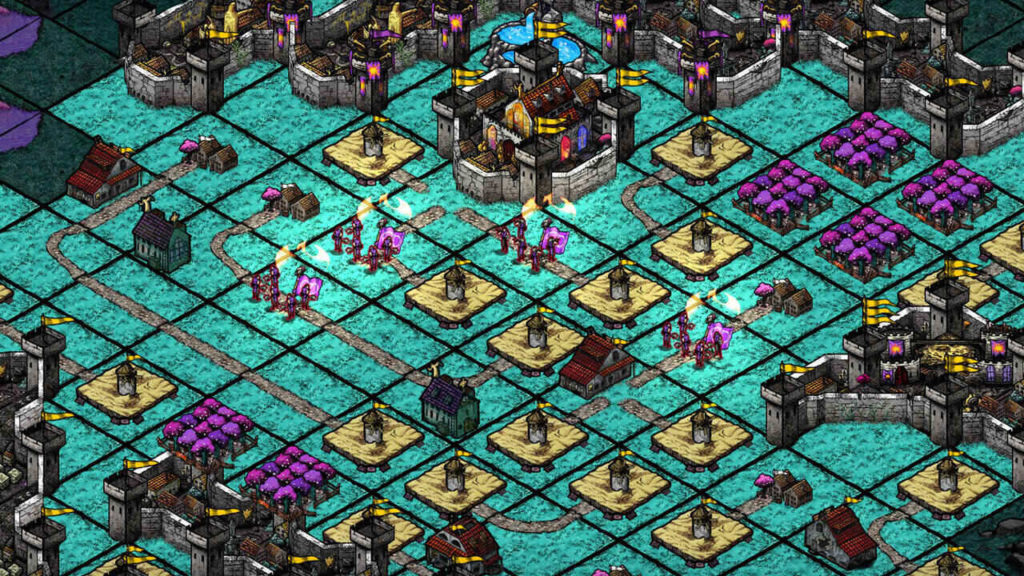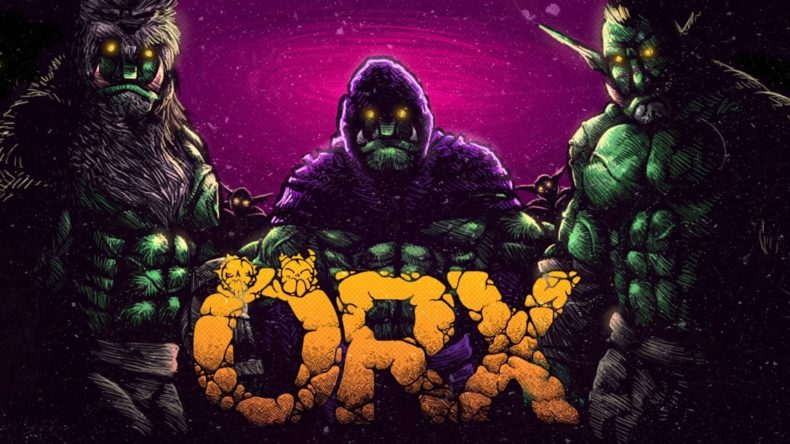When ORX and its unique blend of tower defence and card gameplay hit early access a couple of months ago I was very impressed. Inspired by a love of board games, developer johnbell combined so many of my favourite gaming elements (cards, roguelike runs, strategic gameplay) and made an experience I just couldn’t put down.
With only two of the four classes available to play as in the current build, there’s still a lot more to come for fans of the early access game. I was lucky enough to get the chance to chat with game designer at johnbell Ivan Suhin recently about what inspired ORX and what’s coming next for the game, and now I’m even more excited for version 1.0.

Ivan Suhin, game designer at johnbell
The idea of blending tower defence and deck building is really unique. How did you come up with it?
The lead developer and I are very good friends, and we both love board games. We used to go to lunch together and play Carcassonne. It’s really fun to build huge castles in Carcassonne, and as we were playing, we got an idea: what if those enormous castles were being attacked by someone? We started expanding on this idea and it all came together to become ORX!
I’m a huge fan of Tower Defense as a genre – I often think “what if we added Tower Defense elements to this?” while playing different games. This passion certainly played its role in the creation of ORX.
How difficult was it to bring board game mechanics across to the world of video games while adding your own flavour?
This was a real challenge, to be honest with you! The vast majority of board games don’t transition well to the digital medium. That’s because the essence of board games lies in things that you just can’t replicate on a computer, such as tactile experiences with cards and tiles, and, most importantly, socialization.
If you just bring the same mechanics over to a digital medium – the game will lose a big part of its charm.
But I believe that you can keep the charm. We worked very hard on the UX – for example, we’ve spent two years iterating the tile placing mechanic, making sure it “feels good” to play – and we believe that we can make it feel even better. There are quite a lot of things to consider here, from animation to sound design.

Outside of board games, were there any particular video games that inspired the game?
At the time that we started the development of ORX, Slay the Spire was the new big thing in indie gaming. So we took inspiration from them in terms of rogue-lite elements. In the end, our system turned out to be very different: in Slay the Spire they have more complex card-to-card interactions and combos, and in ORX the complexity and the synergy between different cards comes into play only after you place a tile on a map.
During development, we came across the game called Ratropolis – it’s a card-based tower defense strategy. It was interesting to see how they solved the same problems we faced.
My favorite tower defense game of all time is Gemcraft. It’s a game of numbers in a sense, and some stats here may reach unbelievably high values, giving you a feeling that every unit has the potential to become insanely strong. That’s something we were trying to replicate in ORX.
We also took some inspiration from They Are Billions. At first, we thought about making a more traditional RTS, with workers and a slower building process, but They Are Billions gave us an idea to make things more dynamic. Less Age of Empires, more SimCity.
So, our main sources of inspiration were Gemcraft for tower defense elements, They Are Billions for RTS mechanics, and Slay the Spire for everything related to rogue-lite and deck-building.
In the early access build that’s currently available, you can play as two totally different factions with wildly different gameplay. What led to these drastically different play styles?
After creating the solid foundation we did when we created the first faction, we wanted to continue to build and implement various types of content for players to experience. Creating a new faction or a new set of cards isn’t too difficult once you’ve got the basic mechanics up and running.
The second faction, Dune Reavers, was created to be as fun as the first one while introducing a new gameplay style for players to try their hand at. We essentially wanted to ensure that players could experience the game and find their preferred play style, whether that’s going on the defensive, or heading in blazing and going on the offensive.

There’s going to be four factions available when the game hits full release. Could you give us any hints about how the other two factions will play?
Initially, we had this idea of basing factions on classic RPG archetypes – such as a Warrior, a Rogue, a Mage, etc.
Rune Wardens represent the Warrior archetype: there is not much flexibility, everything about them is fundamental. The Dune Reavers are closer to a Rogue, or an archer – an agility-based class, as they can move troops around and are more “flexible” in general.
One of the remaining two factions will represent the Mage – with gameplay based on summons, necromancy, golems, and alternative sources of energy, so to speak. The other one will revolve around ‘Heroes’ (which is a placeholder name) – powerful units, able to defeat tons of ORX by themselves, with the rest of the faction providing support.
We will obviously share more information when the time comes, but that’s all we can disclose for now!
You released in early access a couple of months ago now. How did you decide that early access was the right way to launch ORX?
It was a decision that came very naturally to us due to the way we work. We came to the point where we had essentially got the base mechanics down, and were continuing to add new features and mechanics to test them out in game. While feedback from our team of 10 incredibly passionate people was important to ensure we all liked the new features, the larger community could offer us a new perspective that we knew could only improve ORX and help us bring it to new heights. So we decided that we wanted to let our players into this process. It’s all been so helpful to us. Thank you to everyone who’s offered their insight and feedback!
We’ve recently launched an experimental branch to test out new mechanics and content, and the support from the ORX community on Discord has been nothing short of amazing, as well as extremely helpful.

When do you expect ORX to hit 1.0, and what features do you want to include before then?
Our final goal is simple: to make the game as fun to play as possible, and give the player an opportunity to constantly try new deck builds and strategies. In order to achieve this, we will be gradually adding more depth to the game: more tactical options, more types of enemies that will require different strategies, and more fun challenges for the player.
We will considerably improve the narrative side of things: the lore and the main story will be much more prevalent in the final game. Upon completing ORX, the players will get proper endings – instead of the simple victory screen that we have now. Everything will feel more meaningful, and we hope our fans are going to love what we have in store for them.
From the technical side of things – we’ll have to make ORX run smoothly even on the latest stages of the game. 5000 ORX warriors on the same map, with no issues – that’s our current goal.
I really enjoyed my time with ORX, but I found it very difficult to understand all the systems when I first started. Do you have any plans to add a dedicated tutorial or an intro level in future early access updates?
This is something we’re aiming to address moving forward and was part of why it was so important to get that player feedback. We are preparing a more in-depth tutorial and restructuring the intro missions – that way the players would learn mechanics gradually, as well as have some time to practice.
I spent all my time with ORX on Steam Deck, and it runs really well there. Did you make any design choices to support Valve’s handheld? You’re also planning to release ORX on console further down the line. What challenges does this present?
Actually, we’ve designed ORX with tablets in mind – and that goal also worked well for the Steam Deck. The very first builds were actually developed for tablets, but then we hit the wall in terms of performance and turned to PC.
But the DNA is still there, so we’re happy to hear that you enjoyed ORX on Steam Deck! We are definitely planning to improve this experience further in the near future.
Our goal is for ORX to be playable on many different platforms. The main challenge here is to ensure that the UI is clear so players can have a great experience, no matter what platform they play on.
ORX is available now in early access on Steam.





